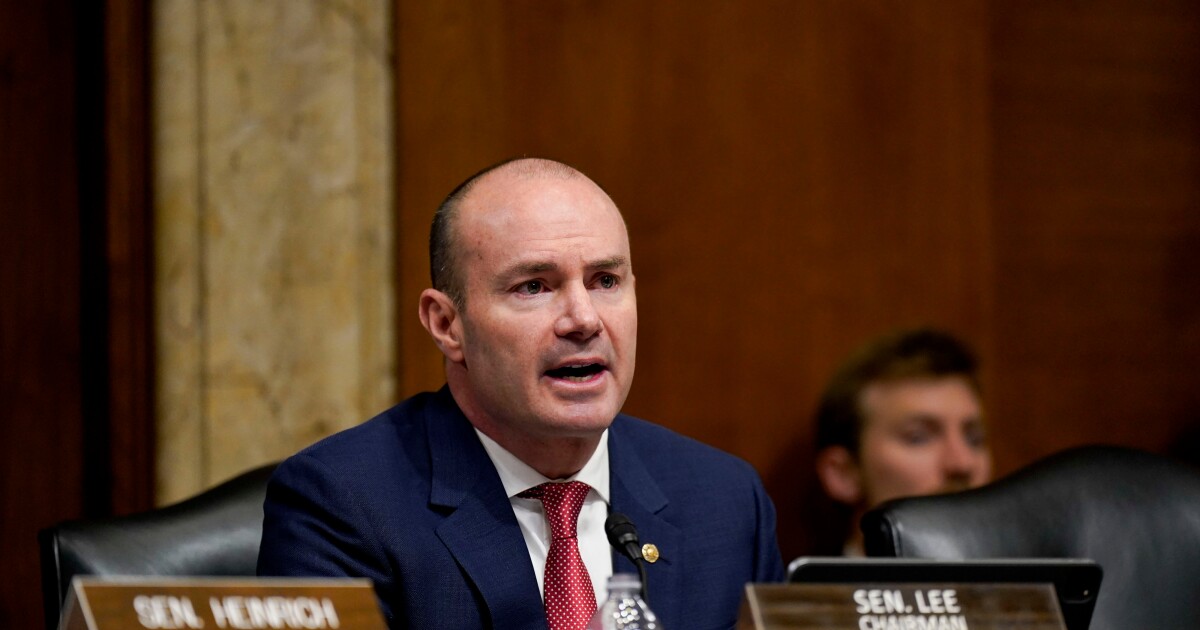Accounting
Transforming accounting firms through connected leadership
Published
2 months agoon

In my work with accounting firms, I’ve lost count of how many times I’ve heard partners say some version of: “We’re paying top dollar. Why are people still leaving?” One conversation particularly sticks with me — a managing partner genuinely baffled by rising turnover despite offering excellent compensation packages.
What I often discover isn’t surprising: Many firms have mastered technical excellence and client service while leadership runs on autopilot. They focus almost exclusively on metrics and deadlines, forgetting the human element. No wonder talented professionals walk out the door seeking workplaces where they’re valued for more than just their billable hours.
We’re facing a significant talent challenge in our profession. From
(Read more: “
The timing couldn’t be worse.
The disconnection crisis
Traditional accounting leadership has often prioritized technical excellence and client service at the expense of human connection. We’ve built cultures where being constantly available somehow equals commitment, boundaries are treated as limitations rather than assets, and professional development means technical improvement instead of leadership growth.
Technology has both connected and disconnected us. I’ve worked with firms where team members haven’t had a meaningful conversation with their managers in months despite being on Zoom calls together every day. This disconnect leads to declining engagement and stalled innovation, and makes retaining talented professionals increasingly difficult.
Connected leadership isn’t complicated — it’s about creating real relationships through intentional practices that build trust. It’s the opposite of the “manage by spreadsheet” approach that’s all too common in our profession.
I love thinking about connected leadership like conducting an orchestra. Great conductors don’t just keep time — they understand what makes each musician unique, create space for individual expression within the group, and know when certain sections should shine while others provide support. Most importantly, they get that beautiful music comes from relationships, not just technical precision.
This approach sits at the heart of what I teach through

Alenavlad – stock.adobe.com
The business case for connection
Before dismissing this as too “soft” for our numbers-driven profession, consider the data. According to
Organizations with high engagement see 21% higher profitability and significantly lower turnover. What accounting leaders really need to understand is that managers account for 70% of the variance in team engagement. When managers themselves are engaged, employees are twice as likely to be engaged too. These positive shifts translate to better retention, stronger client relationships and improved profitability.
Beyond retention, connected leadership directly impacts client relationships and innovation. When team members feel psychologically safe, they’re more likely to raise concerns, suggest improvements, and deliver exceptional client service.
Becoming a connected leader
You don’t need to overhaul your entire firm to start seeing results. Try these practical approaches:
- Take a beat. Before jumping into solutions or directives, pause to really listen. Some of my most successful clients start meetings with “connection before content” — spending just a few minutes establishing human connection before diving into the agenda. I recently had an attendee of my Connected Leadership workshop tell me: “Taking just two minutes to meditate can remarkably reset the nervous system, providing a quick and effective way to find calm and focus during a busy workday.”
- Create boundary rituals. Work-life harmony isn’t about perfect balance — it’s about intentional integration. Help your team establish clear boundaries that actually enhance client service, like “no-meeting Fridays” or dedicated deep work blocks. One partner told me their key takeaway was “to take care of myself to be better in all aspects of life!”
- Measure what matters. Beyond billable hours and realization rates, assess team connections through regular check-ins focused on engagement and belonging. Another workshop participant noted that, as a leader, they must take “100% responsibility for my own actions and outcomes.” What gets measured gets managed — so measure the human element, too.
- Get comfortable with vulnerability. Share appropriate challenges and lessons learned, showing that vulnerability is a strength. Poignant feedback from my last workshop stated: “For the managing partners and leaders of the organization to put out there for us their vulnerabilities, past struggles, and pain is a testament to their humanity and endurance, and that is a powerful takeaway.”
The future of accounting leadership
When faced with resistance, start small with measurable experiments. Document outcomes, adjust approaches and gradually expand successful practices. Focus on the business case rather than just the human case, though both are equally important.
As our profession navigates unprecedented talent challenges, we need to evolve how we lead. The firms that will thrive won’t just be those with the best technical expertise — they’ll be the ones where leaders prioritize connection alongside excellence.
I challenge you: Are you leading in a way that creates meaningful relationships, or are you perpetuating a culture where people feel like just another billable resource? Your answer might determine whether your firm struggles to keep talent or becomes a magnet for professionals seeking both success and fulfillment.
In an orchestra, the most powerful moments often come not from individual instruments playing louder, but from all sections playing in harmony. The same is true for our teams.
You may like
Accounting
Trump-Musk alliance unravels in split over ‘Big Beautiful Bill’
Published
51 minutes agoon
June 5, 2025

From the moment Donald Trump and Elon Musk joined forces, betting in Washington held that the president’s bond with the First Buddy who bankrolled his comeback election win wouldn’t last.
It didn’t.
A relationship that blossomed at the height of the 2024 presidential campaign and deepened as Musk joined the new administration to slash the federal bureaucracy unraveled this week in spectacular form, with the world’s richest man declaring his opposition to tax legislation that’s the centerpiece of Trump’s domestic agenda.
With posts on social media urging lawmakers to reject Trump’s “Big Beautiful Bill,” Musk exposed a rupture that had been growing between him and the president for weeks, fueled at first by clashes with cabinet members over agency cuts and differences with the administration’s sweeping tariff plans.
Musk’s public break with Trump threatens further fallout for the allies he helped to install in key positions across federal agencies during his time overseeing the Department of Government Efficiency that he prodded Trump to create.
It also raises questions about whether the biggest billionaire spender of the 2024 election will remain a reliable source of campaign funding to sustain Republican control of the House in the mid-term elections and to make permanent Trump’s political movement.
Trump’s orbit
Administration officials who have bristled at Musk’s power and bedside manner have been moving to reassert their influence in the executive branch since he announced his departure from DOGE, people familiar with the matter said.
That includes the installation of a close associate of White House Chief of Staff Susie Wiles as chief of staff at NASA — an agency that is crucial to SpaceX, a company that makes up a third of his net worth. People familiar with the matter said the withdrawal of the nomination of Jared Isaacman, a Musk ally who was poised to run the space agency, was driven by Sergio Gor — the director of the Presidential Personnel Office, with whom Musk had sparred during his DOGE tenure.
“A lot of Musk’s power stemmed from the fact that was seen as an extension of Trump,” said Stephen Myrow, who runs Beacon Policy Advisers. “But now that there’s distance between them, that power might be waning.”
“I always talk about the ‘evolving orbit’ around Trump — people are always drifting in and out,” Myrow added. “I wouldn’t say Musk’s relationship with Trump is severed. But between Isaacman’s nomination being pulled and his public criticisms of the tax bill, he looks to be in the waning phase of his orbit.”
A White House official in an email pointed to multiple past donations that Isaacman had made to Democrats, suggesting that was the reason his nomination was nixed. In a podcast interview Wednesday, Isaacman said he didn’t believe that was the reason, given the information had long been publicly available.
“President Trump is the ultimate decision maker on who has the privilege of serving in his historic administration,” White House spokesperson Liz Huston said. “Any claims to the contrary are completely false.”
Musk didn’t respond to a message seeking comment. On X, his social media platform, one user said Isaacman’s removal was a “gut punch for the space agency,” to which Musk
‘At great personal cost’
The fissure caps a roller-coaster 11 months from Musk’s endorsement of Trump in July of 2024. Musk spent hundreds of millions to elect Trump and Republicans in 2024, and when the once and future president defeated Kamala Harris in November’s election, he turned to Musk to lead an effort to slash the size and scope of government.
Musk scythed through the federal bureaucracy while Trump unleashed a flurry of executive actions, each seeking to dismantle the administrative state at what the White House came to call “Trump speed.”
Yet swift progress on conservative priorities came with a price tag for Musk, who has seen his own net worth plummet in part because of reputational tarnish at home and abroad from his political actions and affiliation with Trump.
Musk’s net worth — much of it tied to the performance of Tesla Inc. — has dropped an estimated $64.1 billion so far this year, according to data compiled by Bloomberg Billionaires Index. It’s the largest on-paper loss of any of the world’s 500 richest people for whom Bloomberg tracks fortunes.
And now, on his top political focus point of deficit reduction, any success Musk can claim — achieved, in his own words, “at great personal cost and risk” — may be drowned out by the president’s own signature legislation.
It more than defeats all the cost savings achieved by the @DOGE team at great personal cost and risk
— Elon Musk (@elonmusk) June 4, 2025
The Congressional Budget Office projected that the House-passed tax and spending bill at the center of Trump’s legislative agenda
That’s way above even DOGE’s most optimistic savings estimates. Its government website listing estimated savings states that DOGE has saved taxpayers about $180 billion year-to-date. However its “Wall of Receipts” — a line-by-line list of contracts, grants and leases canceled since Inauguration Day — only accounts for less than half of that number.
Adding to the risk for Musk’s bottom line, Trump’s bill would wipe out some valuable tax incentives that bolster his own companies. Musk
In an interview with Bloomberg Television on Thursday, Johnson did not confirm whether Musk had approached him over the credits, but said the two would speak later in the day, adding that Musk seems “pretty dug in right now, and I can’t quite understand the motivation behind it.”
Musk’s criticism of the spending package — which Trump has branded as a “big, beautiful bill” — built slowly.
On Tuesday, however, Musk lashed out, posting on his social media platform, X, that the bill was “pork-filled” and “a disgusting abomination.”
Adding insult to injury for the White House, Musk has embraced the very argument that the administration has been trying to combat, noting the bill would significantly widen the federal budget deficit.
By Wednesday afternoon, Musk was posting about “debt slavery” and sharing an image of Uma Thurman holding a samurai sword — the poster for the film “Kill Bill.”
Widening rift
The rift between the two billionaire showmen — each renowned for seeking out the spotlight, and not for sharing it — had seemed to be widening for a while.
Even as Musk embraced his DOGE role and continued making periodic appearances at the White House, he broke with some of Trump’s policies.
Musk has criticized tariffs, the primary tool in Trump’s economic agenda, but one that has shown the potential for massive disruption in markets Musk moves in, including those for batteries critical to the fate of Tesla’s automotive and energy units.
An outside Trump advisor said the president remained furious about an incident, reported by The New York Times, in which Musk angled to obtain a classified briefing from the Pentagon about the upshot of a war with China, where Musk has extensive economic interests, especially via Tesla.
As public furor grew over DOGE’s unilateral cuts to federal agencies, Trump publicly reined Musk in, asserting that cabinet officials would have final say over proposed reductions.
In a May 20 appearance at the Qatar Economic Forum, Musk told Bloomberg’s Mishal Husain he intended to pull back from political giving, only months after spending nearly $300 million to boost Trump’s successful campaign for the White House.
Sour taste
Behind the scenes, Musk’s sojourn through the West Wing left a sour taste for some officials, according to the outside adviser and one person within the administration.
The outside adviser particularly noted Musk’s brusque treatment of Wiles, who managed Trump’s victorious campaign before joining the administration. It was a longtime Wiles ally, Brian Hughes, who was sent to serve as NASA chief of staff, a position from which he could serve as a check in an agency that is central to SpaceX’s fortunes.
A senior White House official said Wiles and Musk had a cordial and collaborative relationship, and that the chief of staff met weekly with the tech entrepreneur as he led DOGE.
The official said Hughes had long wanted to work at NASA, and that his placement there was not an effort to keep tabs on Musk and SpaceX.
A person familiar with SpaceX discounted the chance that bad blood between Musk and Trump would have an immediate negative effect on the company, because it has carved out such a dominant position in the launch business even as corporate rivals have struggled. But the person said there is frustration that the company’s brand has been damaged, first with Democrats who were appalled by Musk’s embrace of Trump and DOGE’s tactics, and now with Trump supporters in Washington, who will likely side with the president over Musk.
But Musk’s time with Trump has already yielded benefits in other ways, said Myrow, especially in areas where the administration or DOGE pulled the plug on aspects of the regulatory state that had previously tangled with his companies.
“For Musk personally, the SEC stuff went away,” Myrow said, referring to Securities and Exchange Commission investigations. “And he’s long wanted to turn X into an ‘everything app,’ and now a lot of the regulations that would have inhibited that are going away.”
Accounting
Senate to reinstate US public lands sale to pay for tax cuts
Published
1 hour agoon
June 5, 2025

A plan to sell thousands of acres of federal land to help pay for President Donald Trump’s massive package of tax cuts will be returning in the Senate’s version of the bill, according to a key lawmaker.
Senator Mike Lee, the chairman of the committee with jurisdiction of energy and public land, told reporters Wednesday that a version of the plan would be included in their portion of the budget bill the panel plans to make public, likely on Monday.
House Republicans had initially sought to add the sales into their version of the bill, but the idea was thwarted amid opposition from lawmakers such as Montana Representative Ryan Zinke. The House’s proposal would have raised billions through the sale or transfer of nearly 450,000-acres of public land in scores of parcels in Utah and Nevada, but the politically charged idea has faced criticism, including from within Trump’s own party.
Lee, a Republican from Utah, said Montana would be exempted from sales in his version of the legislation. While Lee didn’t specify which other states would be included, he did say it would involve Utah and other states “west of the 100th meridian.” The 100th meridian is a line that has historically separated America’s wet East from the dry West and runs through North Dakota, South Dakota, Nebraska, Kansas, Oklahoma and Texas.
The federal government owns 650 million acres of land, 90% of which is located in Western states,
“Once land is taken by the federal government, it is often locked away forever from economic production,” the group said in a fact sheet. “Local governments in the West miss out on substantial tax revenues from potential energy extraction, mining, timber harvesting and other forms of economic development.”
However, the sale of public land has drawn vehement opposition from conservation groups and others.
“The American people love their public lands and want to see them protected, not sold off to the highest bidder,” said Aaron Weiss, deputy director of the Center for Western Priorities. “Once these lands are gone, they’re gone forever — that means no more hiking, no more biking, no more grazing, no more habitat for wildlife.”
Separately, the Senate’s environmental panel Wednesday released
Accounting
Tax bill’s bid to ban new AI rules faces bipartisan blowback
Published
2 hours agoon
June 5, 2025

A Republican attempt to block states from enforcing new artificial intelligence rules over the next decade has drawn growing bipartisan objections, exposing tension in Washington over allowing for more unchecked AI development.
The proposal, buried on pages 278 and 279 in the sweeping tax bill passed by the House last month, has drawn sharp criticism from Republican Representative Marjorie Taylor Greene and Senator Marsha Blackburn, as well as Democratic Senators Ed Markey and Elizabeth Warren. More than 200 state lawmakers from both parties also urged Congress this week to scrap the measure.
“We have no idea what AI will be capable of in the next 10 years,” Greene
Markey and Warren have also been forceful in pushing back against the measure, arguing that it violates Senate rules that bill language included in the budget reconciliation process must relate to spending. “This backdoor AI moratorium is not serious. It’s not responsible. And it’s not acceptable,” Markey said. Meanwhile, Senate Commerce Chair Ted Cruz (R-Texas) has said he’s “not certain if that provision will survive,” though he has expressed support for it.
Since returning to the White House, President Donald Trump has taken steps to
But bipartisan resistance to the proposed moratorium on AI rules highlights a fierce divide in Washington over how much to let the industry regulate itself.
Congress has yet to pass a federal framework on AI, which has effectively left the states to take the lead on figuring out how to set rules around the technology. California, New York, Utah and dozens of others have introduced or enacted AI laws in recent years, including bills to address concerns about data privacy, copyright and bias raised by the technology.
If Congress backs away from the proposal, it would mark a setback for top AI developers. In March, OpenAI asked the White House to
So far, the leading AI companies have largely stayed quiet as the fight over the measure plays out. Meta Platforms Inc. declined to comment. Alphabet Inc.’s Google didn’t respond to a request for comment. OpenAI declined to comment beyond its previous policy suggestions.
TechNet, a trade group representing Google, OpenAI and other tech companies, echoed the ChatGPT maker’s concerns about the “developing patchwork” of state AI bills. “In 2025, over 1000 AI bills have been introduced in state legislatures — many containing incompatible rules and requirements,” Linda Moore, chief executive officer of TechNet, said in a statement to Bloomberg News. “A consistent national approach is critical,” she added, to address AI risks and “ensure America remains the global leader in innovation for generations to come.”
Anthropic, a safety-focused AI startup that has called for more regulation generally,
“Ten years is a long time,” Anthropic CEO Dario Amodei said at the company’s developer conference on May 22, speaking about the moratorium. “It’s one thing to say, ‘We don’t have to grab the steering wheel now.’ It’s another thing to say, ‘We’re going to rip out the steering wheel and we can’t put it back in for 10 years.'”
Some Republican senators have raised doubts that the AI provision can pass through the reconciliation process, but this camp has also expressed support for an interim ban on state rules to avoid an overly fragmented and complex regulatory landscape.
“I wouldn’t put my money on anything right now until it actually passes,” John Curtis, a Republican senator from Utah, previously
State legislators, however, worry that the provision would rob them of the ability to protect their constituents from the rapidly evolving technology.
“Over the next decade, AI will raise some of the most important public policy questions of our time,” state lawmakers from 49 states wrote in a

Stocks making the biggest moves midday: Brown-Forman, Five Below, Ciena, PVH, Planet Labs and more

Trump-Musk alliance unravels in split over ‘Big Beautiful Bill’

Trade deficit fell by a record amount in April as demand dropped for imports

New 2023 K-1 instructions stir the CAMT pot for partnerships and corporations

The Essential Practice of Bank and Credit Card Statement Reconciliation

Are American progressives making themselves sad?
Trending
-

 Economics1 week ago
Economics1 week agoElon Musk says Trump’s spending bill undermines the work DOGE has been doing
-

 Blog Post5 days ago
Blog Post5 days agoCommon Bookkeeping Challenges and Solutions for Small Businesses
-

 Accounting1 week ago
Accounting1 week agoHighest paid jobs in corporate accounting
-

 Economics1 week ago
Economics1 week agoHow young voters helped to put Trump in the White House
-

 Personal Finance1 week ago
Personal Finance1 week agoHarvard, Trump international enrollment battle affects college applicants
-

 Economics6 days ago
Economics6 days agoWhy the president must not be lexicographer-in-chief
-

 Personal Finance1 week ago
Personal Finance1 week agoCrypto in 401(k) plans: Trump administration eases rules
-

 Finance1 week ago
Finance1 week agoVail Resorts, GameStop and more
